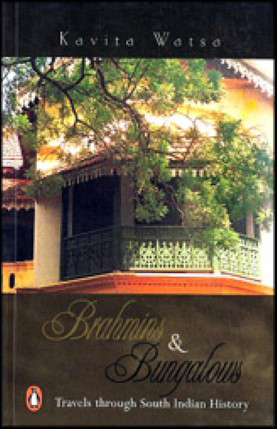Registered with the Registrar of Newspapers for India under R.N.I 53640/91
Vol. XXXI No. 1, April 16-30, 2021
My reminiscences of Fort St. George
A wonderful mentor

“My friend Akhila’s father Uncle Ram introduced me to Mr Muthiah in the mid 1990s. At first I was terrified of the gruff old gentleman, but I soon learnt his preferences and tried to edit or read proofs to the best of my ability, including for his book on Spencer’s. One day, he asked me to write something for Madras Musings and when I delivered it, he read it and looked up at me in surprise. “You are a much better writer than you are an editor,” he said. Contrast this with a recent experience at an advertising agency where a nasty young man said to me “You will never be anything more than a proof reader”. Mr. Muthiah didn’t drown me in praise to be sure, but his criticisms were always fair and when he had something good to say, he always said it. And there would always be a stainless steel tumbler of rasam for me from his kitchen — delicious, if a bit overpowering in the heat of a Madras afternoon. In later years, he was very pleased when I visited him and proud of anything I did. My last communication with him was when he visited the US about some years ago. We exchanged emails. I was very amused that Mr Muthiah had succumbed to email. He had deeply disliked anything electronic. A grand old man of Madras, and a wonderful mentor.”
– Kavita Watsa

I had lived in Madras, that little-praised metropolis on the Coromandel, for six years before it occurred to me that it might be vaguely in order to visit Fort St. George. This was where today’s six-million-strong city and its steaming suburbs had taken root four hundred years earlier, in the shape of a fortified English ‘factory’ built by a fistful of traders and mercenaries. In retrospect, it seems unthinkable to have so carelessly overlooked this orchid among the weeds in my backyard. I had been dimly aware of the fort’s existence, of course, but perhaps it was the ungainly bulge of the present-day secretariat of Tamil Nadu in the very womb of the defences, and all the hangers-on thereof, that had diminished its approachability. Despite living on the edge of Egmore, I had been unmoved by the fact that this neighbourhood was once part of the fort’s generous social hinterland. In fact, my apartment block possibly stood on the site where an English garden house had once nestled among trees on sprawling grounds. Facing the Bay of Bengal a few miles to the east, the fort remained on the periphery of my consciousness.
I never think of those six years without an odd feeling of guilt, for Fort St. George has few enough admirers in the great unruly city, and has come to accept its own abandonment with a meekness that is hard to countenance. The fort’s ghosts are content to slumber, unsought and undisturbed, behind the solid ramparts that have protected them for centuries from the incursions of the world. It is as if they are lost in a deep, shadowy contemplation of romances past; of assaults thwarted and sieges held; of tragedies from which the pain has long since seeped away; of bales and chintz and muslin that built many a quick fortune, of pink and brown seashells lying scattered on the shore, and catamarans bleached ivory in the sun; and, incessantly, of the shifting sands upon which began and ended a thousand voyages. Now, when I think about their world more intimately, I reflect that it must take a special night to awaken these men and women, to persuade them to surface briefly from under the dark folds of their buried layer of time. A summer night, perhaps, when the sea breeze grows irrestibly sweet and altogether too reminiscent of life; a night when souls might return despite themselves to pace the edge of the moat and await the appearance of a ship on the horizon or a horseman in the distance, to listen once more to the strains of song drifting across from the barracks, or merely to rejoice once again in the sentiments of a letter written lately from home in a familiar and beloved hand.
It was only when my father came across for a short vacation one year that I went over to the fort and took a look, for my love of history was yet nascent compared with his…
‘What’s there in this city that we can go and see?’ he asked hopefully one Sunday afternoon…
…all morning in his pyjamas drinking beer and making fatherly conversation with me, touching as this parent-child ritual was. ‘You know, some old cemetery or something.’
‘We could go across and see Fort St. George,’ I said, a little reluctantly. The day was hot and the beer was cool and frothy, at least if one drank very quickly. ‘I’ve always meant to go.’
We abandoned our heavy stone mugs and set off in a humid, sweaty silence. The romance of the past was about the last thing on my mind as perspiration ran in rivulets through my hair and trickled wantonly down my spine. I shifted and leaned hard against the back of my seat, taking an inconsequential satisfaction in interrupting this rude descent…
…With this brief, unromantic visit on a disgustingly hot day, however, was born my enduring love affair with Madras’s forgotten fort – an affection that has returned me time and again to the corridors of Clive and Wellesley, and the streets of Streynsham Master and Elihu Yale. For it was here that the seeds of the eastern British empire were first sown and the bulb of modern India planted, here within the ramparts of a small fort built in 1640 and named after England’s patron saint. Some dismiss Fort St. George as a mere emblem of colonialism, an early stronghold of the pernicious East India Company, but it is infinitely more than that. Within the Fort were carefully moulded the prototypes of every system of greater India would later adopt, from surveys, communication and administration to education, medicine and the military. It is both strange and sorry that, despite the best efforts of the city’s tiny communities of storytellers and heritage enthusiasts, this immense significance is overlooked…
…Day and his superior at Machilipatnam, Cogan, together with their Indian assistants and a few writers (clerks), 25 European soldiers, led by Lt Jermyn and Sgt Jeffery Bradford, and local artificers eventually arrived at Madraspatnam in the Eagle, Unity and a third ship on February 20, 1640, to start work on their settlement, despite getting little or no encouragement from their superiors either in Surat or Bantam (Java). Yet, for all their inestimable contribution to the founding of the metropolis, Day and Cogan were hounded into oblivion by John Company…
Extracts from the book: Brahmins and Bungalows, Travels through South Indian History.

